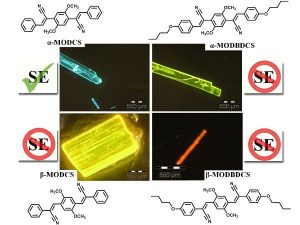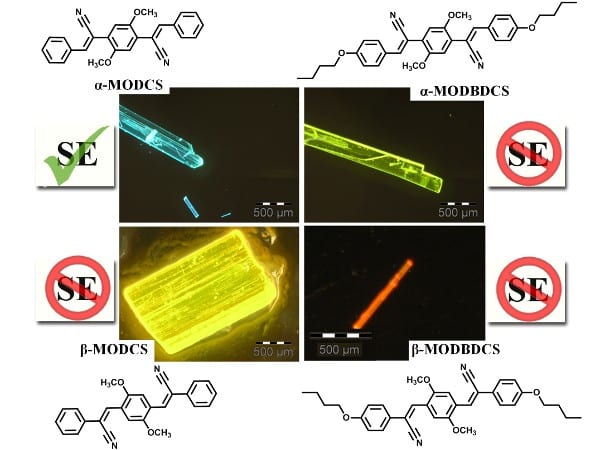 Organic single crystals are systematically designed and their structure–property relationships are analysed such that precise quantification of their spontaneous and stimulated emission properties can be calculated based on the knowledge of their crystal structures.
Organic single crystals are systematically designed and their structure–property relationships are analysed such that precise quantification of their spontaneous and stimulated emission properties can be calculated based on the knowledge of their crystal structures.
Researchers collaborating between Korea and Spain build on their work on aggregation-induced enhanced emission in stilbene-based derivatives containing cyano functionalities, performing detailed structural analyses, photophysical studies and electronic structure calculations. They discovered that the stimulated emission characteristics of these π-conjugated materials are sensitive to specific intermolecular stacking interactions within their structures.
Using a modular molecular system of four systematically substituted luminescent single crystals, they found that the crystals display a gradual transition from a J-type aggregation motif towards an H-type motif with increased intermolecular coupling between the (quasi)-unidirectional π-stacked molecules. These systematic adjustments with different degrees of excimeric contributions are responsible for widely tunable emission colours with high quantum yields.
This knowledge allows control over the emission properties of novel organic π-conjugated materials based on their systematic design, providing guidelines towards the production of conjugated materials with fully tunable spontaneous and stimulated emission properties.

















